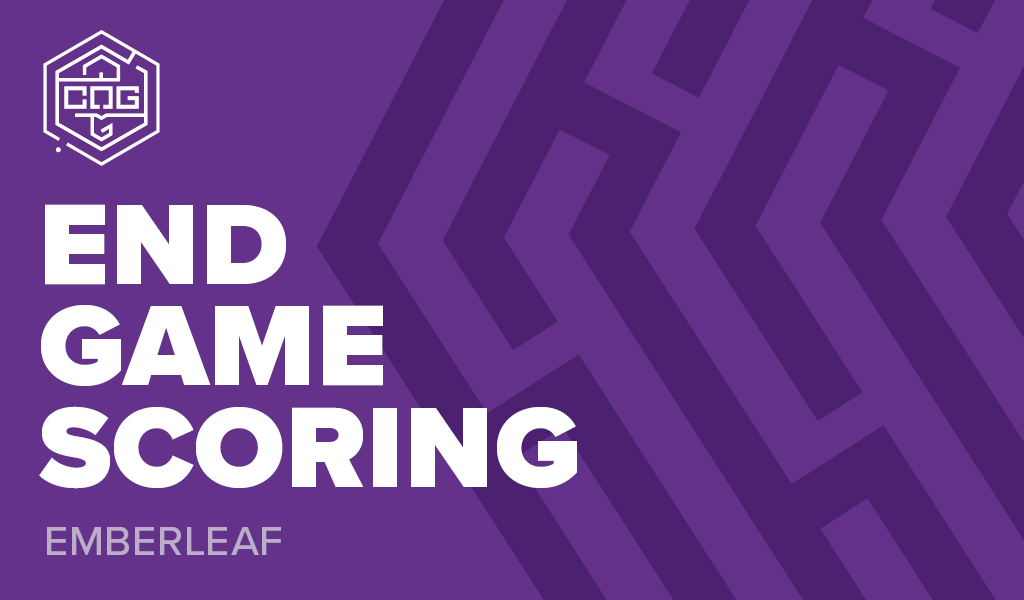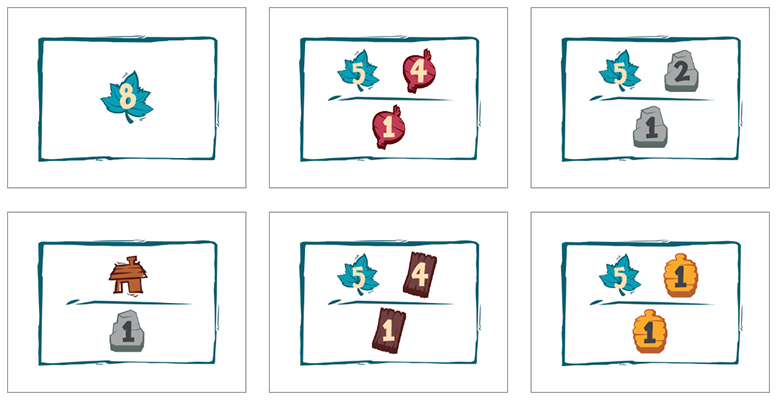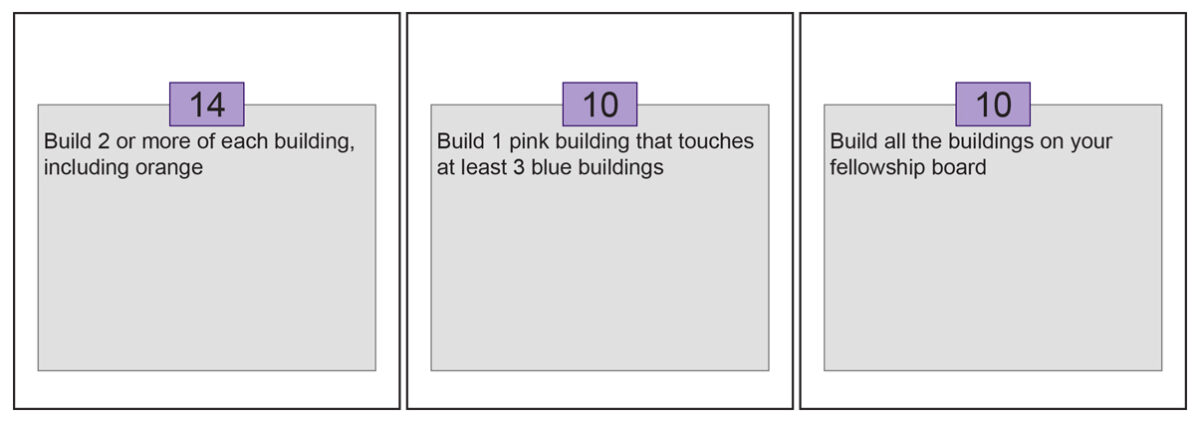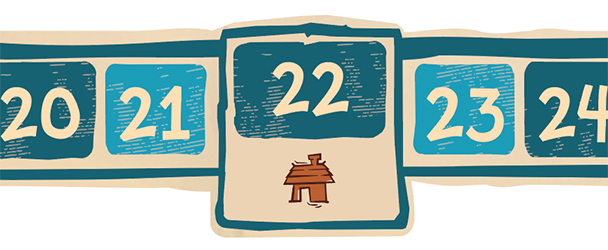Exploring the end game and scoring in Emberleaf

Last week, I delved into the four core skills in Emberleaf, and today, I want to focus on how the end game is triggered and how scoring works. As part of this, I’ll also cover two of my key goals in designing this game.
Designing an unpredictable end game
One of my main objectives was to ensure that Emberleaf didn’t have a fixed number of turns or rounds. I’ve always been drawn to games where you don’t know exactly when the game will end, but as you play, you can sense that the conclusion is approaching. Moreover, I wanted to design an end game trigger that isn’t always the same—meaning that in one game, a particular action might cause the end, while in another game, a different action could trigger it.
A fresh approach to scoring
The second goal was around scoring. In many strategy games, players start from different positions but often converge towards the same objectives, creating a funnel effect. Your choices start broad and diverse but narrow as the game progresses, leading everyone to a similar endpoint. With Emberleaf, I wanted to flip this idea on its head. While players do have different starting setups, I wanted each game to feel unique by ensuring that your objectives and strategies remain diverse throughout the game. This way, even if you start with the exact same setup each time, what you’re trying to achieve—and how you achieve it—will always be different.
How the end game is triggered
As we discussed last week, two of the core skills in Emberleaf are attacking and building. When you perform an attack, you clear a dangerous area and advance the war banner track by one space. This is a shared track, and whenever any player clears a dangerous area, the track progresses. Once the track reaches its endpoint, the player who moves it to the final space will receive a trophy. The length of the track varies depending on the player count.

There are six trophies to choose from, each offering points, resources, or bonuses, and a small reward for the other players. You can select the trophy that best suits your needs, while everyone else gets a minor benefit as well. Once a trophy is claimed, the war banner track resets, and the cycle begins again.
A similar process applies to building. If you place the last building in a clearing, filling it completely, you can take a trophy in the same way as with attacking.
The beauty of this system is that it allows for varied endgame triggers. If your group focuses heavily on fighting, the game might end through combat. If you’re all about building, then construction could bring the game to a close. Or, it could be a mix of both. The game will end once all trophies are claimed, whether through filling the board with buildings, clearing all dangerous areas, or a combination of both. You’ll always have a sense of how close you are to triggering the end based on the current state of the board and the war banner track.
Scoring in Emberleaf
Emberleaf is ultimately a game about points, represented by leaves, which you earn through various achievements. At the end of the game, the player with the most leaves wins. There are several ways to accumulate leaves, and while you likely won’t pursue them all in a single game, you’ll choose different paths each time, focusing on one or two primary strategies or a mix of several.
Let’s break down the scoring methods:
- Trophies: As mentioned, trophies can give you leaves when you claim them.
- Bonus spots on the score track: Certain spots on the score track offer additional leaves when reached, rewarding players based on specific criteria.
- Clearing dangerous areas: Each dangerous area token has a set number of leaves, which you earn when you clear that area.
- Villager tracks: Your fellowship board includes four villager tracks—one each for rats, owls, frogs, and rabbits. When you home the last villager of a type, you score leaves based on the criteria of the completed track. For instance, homing your fifth rat might award you one leaf for each piece of wood in your storage, so you’ll want to time this to maximise your score. Once the villager is placed and the leaves are awarded, you can start spending the wood, making timing crucial.
- Building: Every time you place a building, you score leaves equal to the number of different types of buildings connected to the one you’ve just placed. The more diverse your connected buildings, the higher your score. While you still score leaves for placing a building type you’ve already built, it won’t increase the number of leaves you’re getting. This means that once you’ve built all five building types in a connected area, each subsequent building will score five leaves. However, if you only build one type of building, say houses, you’ll score just one leaf for each house.
- Favour cards: These cards sit at the heart of the game and guide your strategy and can significantly contribute to your final score, often accounting for about 50% of your leaves.
The funnel inverted: favour cards
At the start, I mentioned flipping the traditional scoring funnel on its head. Emberleaf achieves this through favour cards. Similar to lesson cards in The Isle of Cats, favour cards guide your strategy throughout the game. You can collect up to eight favour cards, with a visible pool that refreshes as players draw from it. With 88 different favour cards to choose from, each game offers a completely unique set of objectives to pursue.
3 of the original favour cards from the first playtests.

Typically, about 50% of your final score will come from favour cards, which only score at the end of the game based on your final state. This means that while other leaves are scored immediately, favour cards add an element of suspense and strategy, potentially allowing you to leapfrog other players in the final scoring.
Favour cards in Emberleaf are incredibly diverse, pushing you in various directions—from building specific quantities of buildings or placing them in certain locations, to gathering particular resources, clearing dangerous areas, or focusing on specific villager types. Each game will see you working towards vastly different goals, using a variety of tools to achieve them. Here are a few examples:
- Home 2 frogs, 2 rabbits, and 2 rats in the same clearing.
- Have exactly 3 war banners.
- Have 1 boat house in 3 different clearings.
- Have 1 town hall that touches at least 3 windmills.
- Finish the game with 5 stone in your storage area.
- Have the most town halls.
- Home at least 3 rabbits in windmills.
- Have exactly 3 buildings in Hawker’s Crossing (one of the six clearings)
How would you best achieve these 8 cards in the same game, while optimising your leaves from building placement, and unlocking as many villager track bonuses as possible?
A final note on the score track
Before we wrap up, I want to highlight one of my favourite features in Emberleaf—the score track bonuses. These work a little differently than you might expect. When a player reaches or passes a score track bonus for the first time, all players immediately receive that bonus. Each bonus can only be triggered once, so while the player who triggers it gets preferential treatment in terms of choice, everyone benefits.

This dynamic adds a rewarding layer of interaction, as players aren’t just competing but also indirectly helping each other.
For example, if a player triggers a bonus that allows you to home an extra villager, you could strategically time this to place your fifth rat, scoring 1 leaf per wood in your storage area. With another player triggering the bonus, you won’t have to spend resources to trigger it yourself, maximising the leaves you can gain from this objective.
This system can help avoid a runaway leader issue, but more importantly, it ensures that you won’t be penalised for choosing “slower to score” strategies. If another player races down the score track while you work towards a big payoff, you’ll still receive the bonuses.
If you have any questions, let me know!
You can read more about Emberleaf here:
Frank West
Frank West is a gamer and designer based in Bristol, UK. He published his first board game, The City of Kings, in 2018 and now works on other games and organising events in the local area. His goal? To design and publish games focusing on immersive themes, fun mechanics and beautiful components. If you have any questions or would just like a chat, feel free to get in touch at any time!

